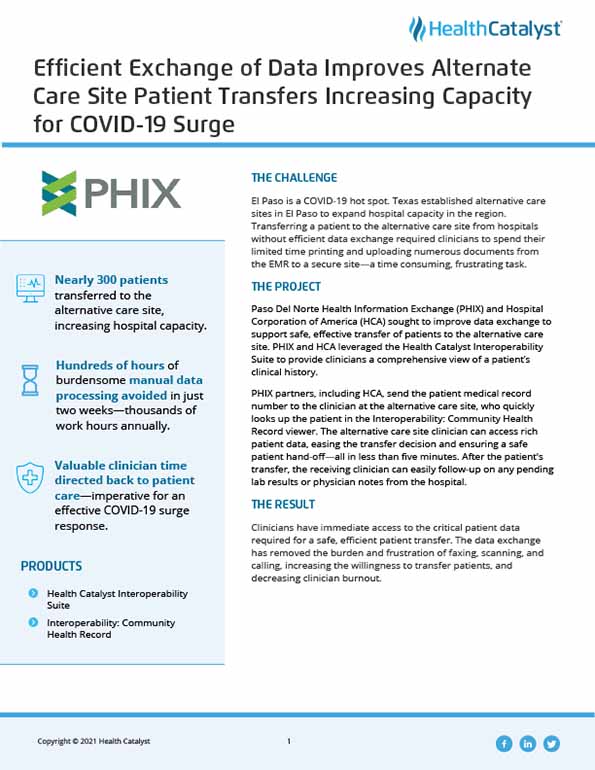Paso Del Norte Health Information Exchange (PHIX) and Hospital Corporation of America (HCA) sought to improve data exchange to support safe, effective transfer of patients to alternative care sites. PHIX and HCA leveraged the Health Catalyst Interoperability Suite to provide clinicians a comprehensive view of a patient’s clinical history. Clinicians now have immediate access to the critical patient data required for a safe, efficient patient transfer.
El Paso is a COVID-19 hot spot. Texas established alternative care sites in El Paso to expand hospital capacity in the region. Transferring a patient to the alternative care site from hospitals without efficient data exchange required clinicians to spend their limited time printing and uploading numerous documents from the EMR to a secure site—a time consuming, frustrating task.
Paso Del Norte Health Information Exchange (PHIX) and Hospital Corporation of America (HCA) sought to improve data exchange to support safe, effective transfer of patients to the alternative care site. PHIX and HCA leveraged the Health Catalyst Interoperability Suite to provide clinicians a comprehensive view of a patient’s clinical history.
PHIX partners, including HCA, send the patient medical record number to the clinician at the alternative care site, who quickly looks up the patient in the Interoperability: Community Health Record viewer. The alternative care site clinician can access rich patient data, easing the transfer decision and ensuring a safe patient hand-off—all in less than five minutes. After the patient's transfer, the receiving clinician can easily follow-up on any pending lab results or physician notes from the hospital.
Clinicians have immediate access to the critical patient data required for a safe, efficient patient transfer. The data exchange has removed the burden and frustration of faxing, scanning, and calling, increasing the willingness to transfer patients, and decreasing clinician burnout.




